Tactile issues may manifest as a dislike of being touched at all or a preference for tight hugs. These could be signs that your child is experiencing tactile dysfunction.
Table of Contents
Activities for Tactile Issues in SPD (Sensory processing disorder) and Autism
Have you ever noticed that your child prefers wearing only one type of clothing? Or perhaps they don’t seem to feel pain when they get hurt and just carry on? These could be signs of tactile dysfunction. To help manage and understand this, engaging in specific activities at home can make a big difference. In today’s blog, we’ll share 10 simple and fun activities that will help your child feel more comfortable and enhance their sensory processing skills.
Activity 1: Messy Play
Babies can be helped to explore new textures through messy play. They find it difficult to adapt to different textures. Our job is to introduce them slowly so that they learn to accept them.
With Watercolours, Slime and Textures
You can use watercolours. Watch your baby play with a fun hand painting. Initially apply colour on just one of their fingers and show them the effect on the paper. Slowly, you can increase their habit by applying colour on two fingers, then three and finally on their entire palm. Similarly, you can use slime or sensory materials. With patience and regularity, babies learn to adapt to textures.
Activity 2: Texture Book
At home, you can make a book of different textures. Include textures from soft feathers to hard bricks. Introduce your baby to these textures slowly. Make it fun and relaxing.
Activity 3: Hot and Cold Play
Expose your baby to hot and cold things, but make sure it is according to their comfort level. Tell the baby that “this is hot” or “this is cold” through role play. Gradually increase their temperature tolerance.
Activity 4: Texture Walk
Some babies don’t like to walk barefoot, while some just want to be shoeless. Texture walks can be very useful for this. Use different types of mats and let the baby feel their textures. Introduce it as a game.
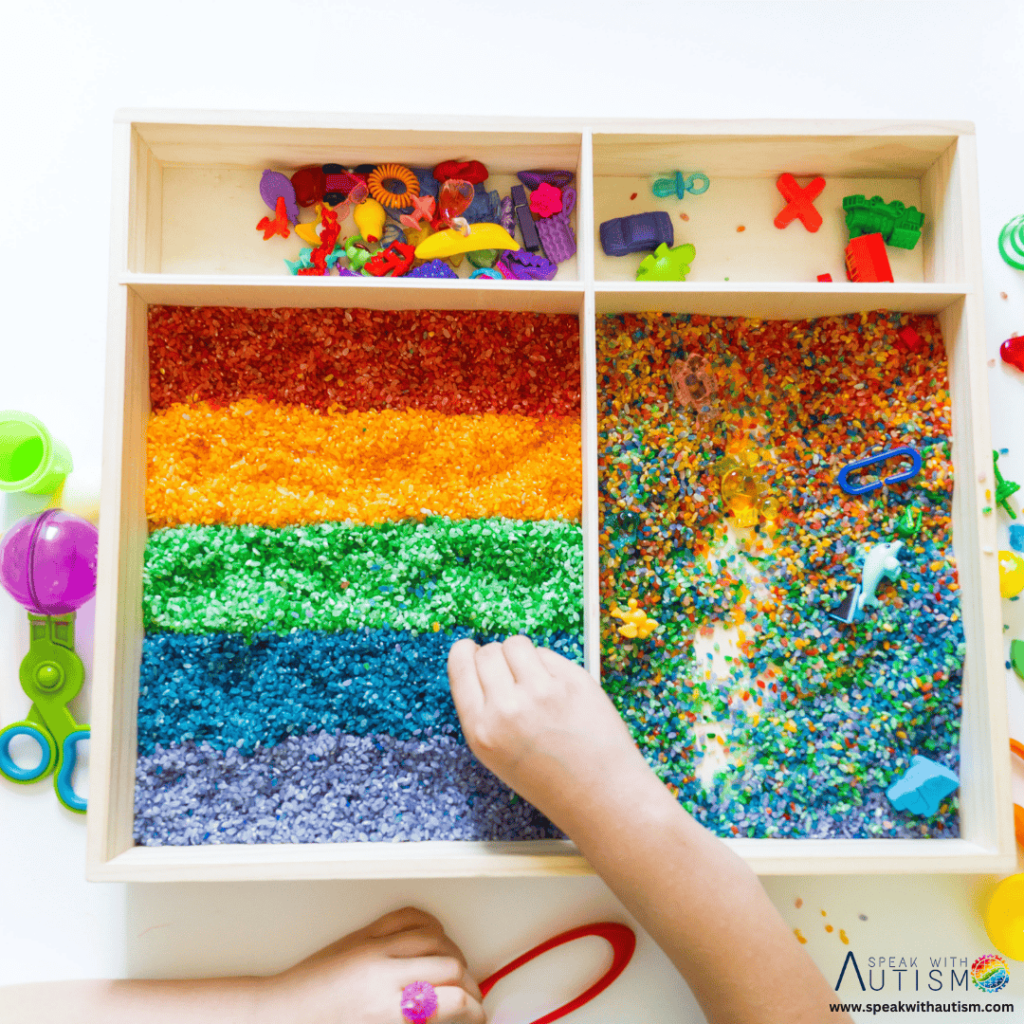
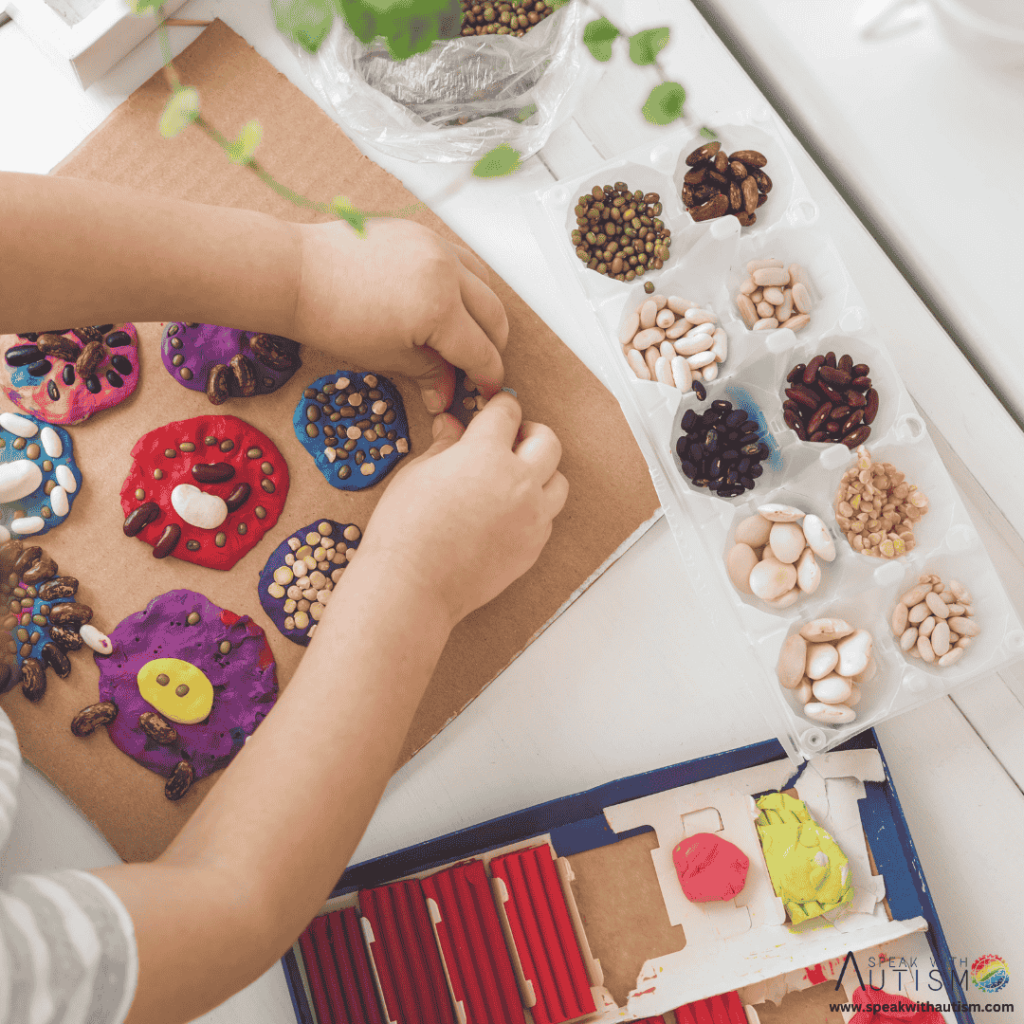
Activity 5: Deep Pressure Activities
Deep pressure therapy helps calm babies.
- Blanket Wrapping: Lightly wrap the baby in a blanket.
- Joint Compression: Relax the baby with gentle joint compression.
- Body Brushing: Use a gentle brush on the baby’s hands, feet, and back.
Activity 6: Treasure Hunt
Hide small toys or objects in different textured materials like rice, wheat, or clay. Ask the baby to find them. This will help in feeling textures and improving object recognition.
Activity 7: Introducing Foods of Different Textures
Introduce the baby to different food textures. Give exposure to smoothies, solids, and crispy items. Present food in a fun way so that the baby explores it.
Activity 8: Sponge Game
Squeeze wet sponges to build strength and sensory tolerance.
Activity 9: Blanket Wrapping
Gently wrap the child in a blanket for soothing deep pressure.
Activity 10: Brushing techniques
Use a soft sensory brush to gently brush the hands, feet, and back.
Activity 11: Watercolor Finger Painting
Start applying watercolors on fingers gradually for sensory adaptation.
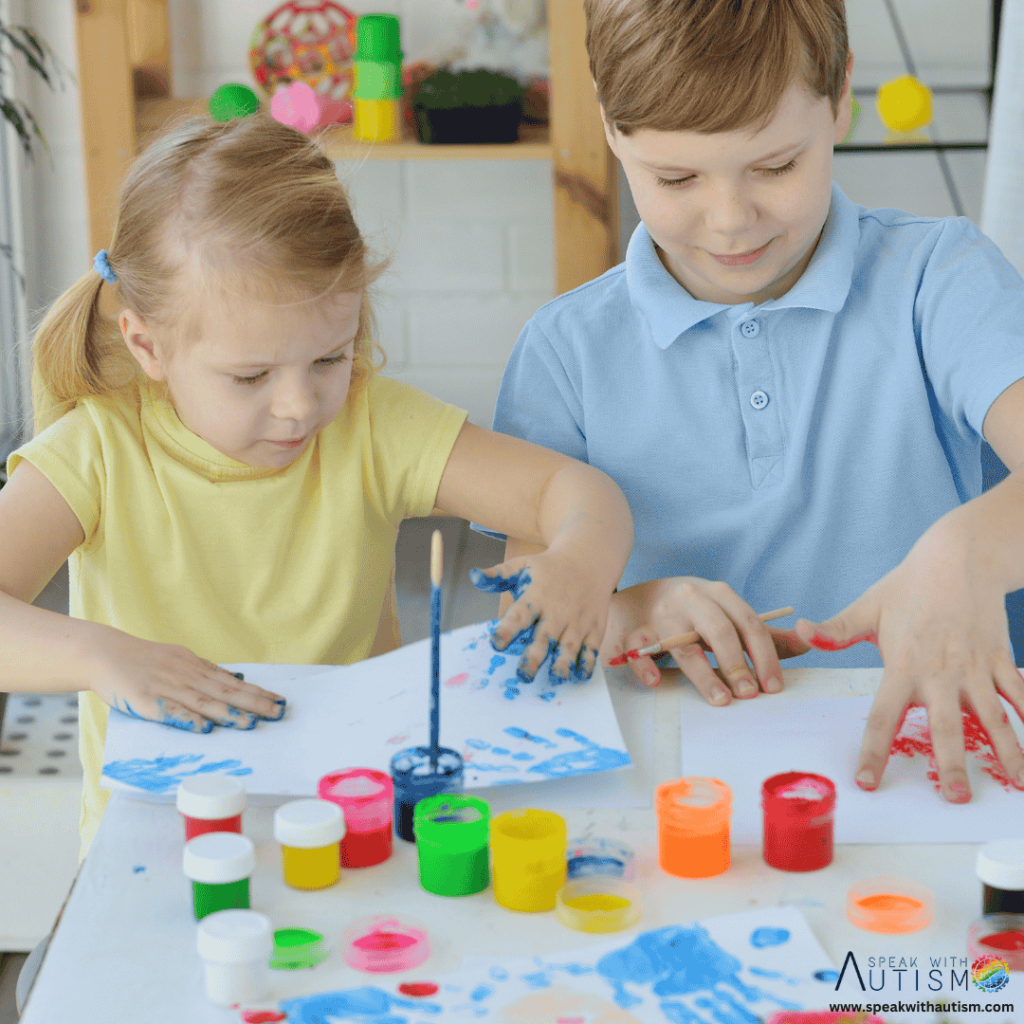
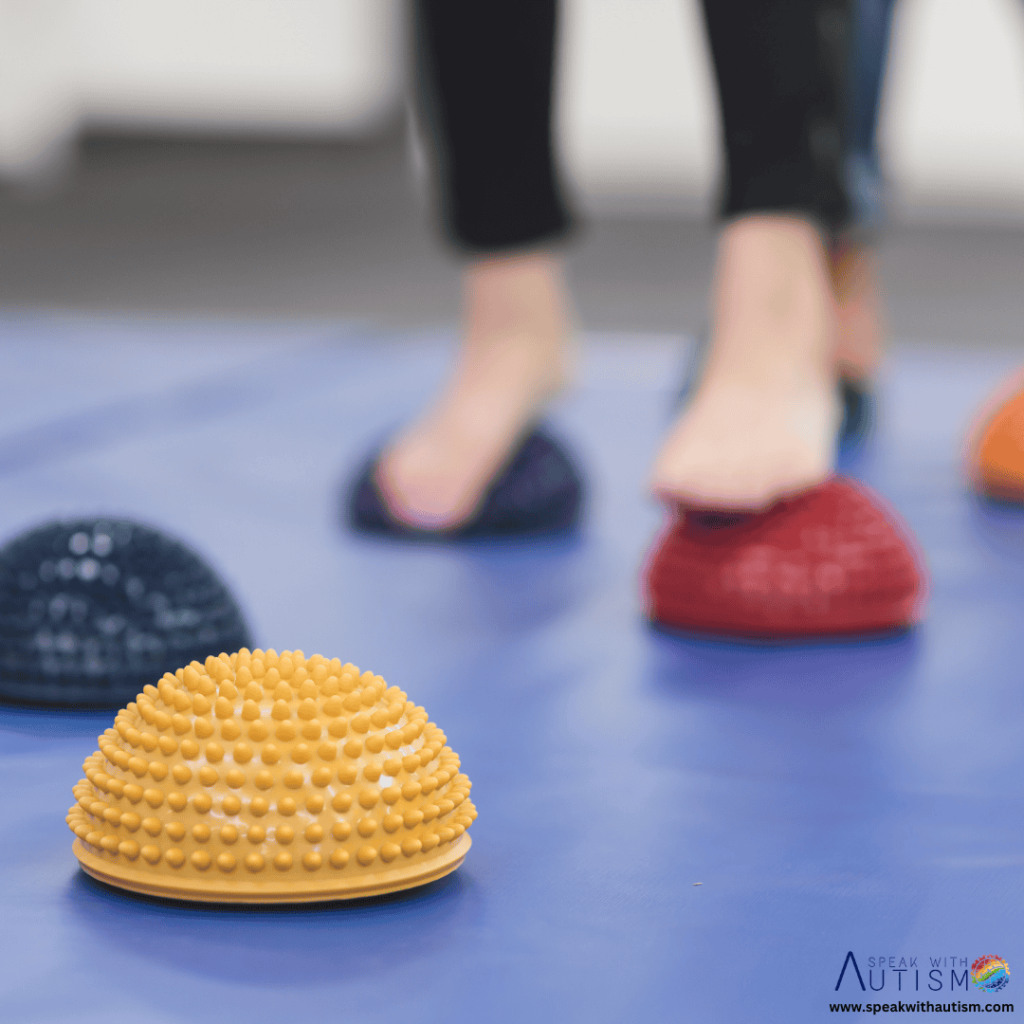
Activity 12: Cereal sorting
Encourage sorting of beans, lentils, or grains by touch for texture.
Activity 13: Foam play
Use shaving cream or foam to create shapes and explore textures.
Activity 14: Bubble wrap popping
Let children pop bubble wrap to enjoy tactile feedback.
Activity 15: Playdough Molding
Shape and mold playdough or homemade dough for fine motor and tactile improvement.
Activity 16: Sandpaper Art
Rub crayons on sandpaper for a unique sensory art experience.
Activity 17: Feather Play
Use soft feathers for gentle touch on arms and hands.
Activity 18: Cooking Activity:
Mix dough or batter by hand for tactile play.
Activity 19: Seed Painting
Dip seeds in paint and create art while feeling the textures.
Activity 20: Hand Clapping Game
Play rhythmic hand claps or play patty-cake for tactile contact.
Activity 21: Sensory bin exploration
Fill bins with sand, rice, or beads for free tactile play.
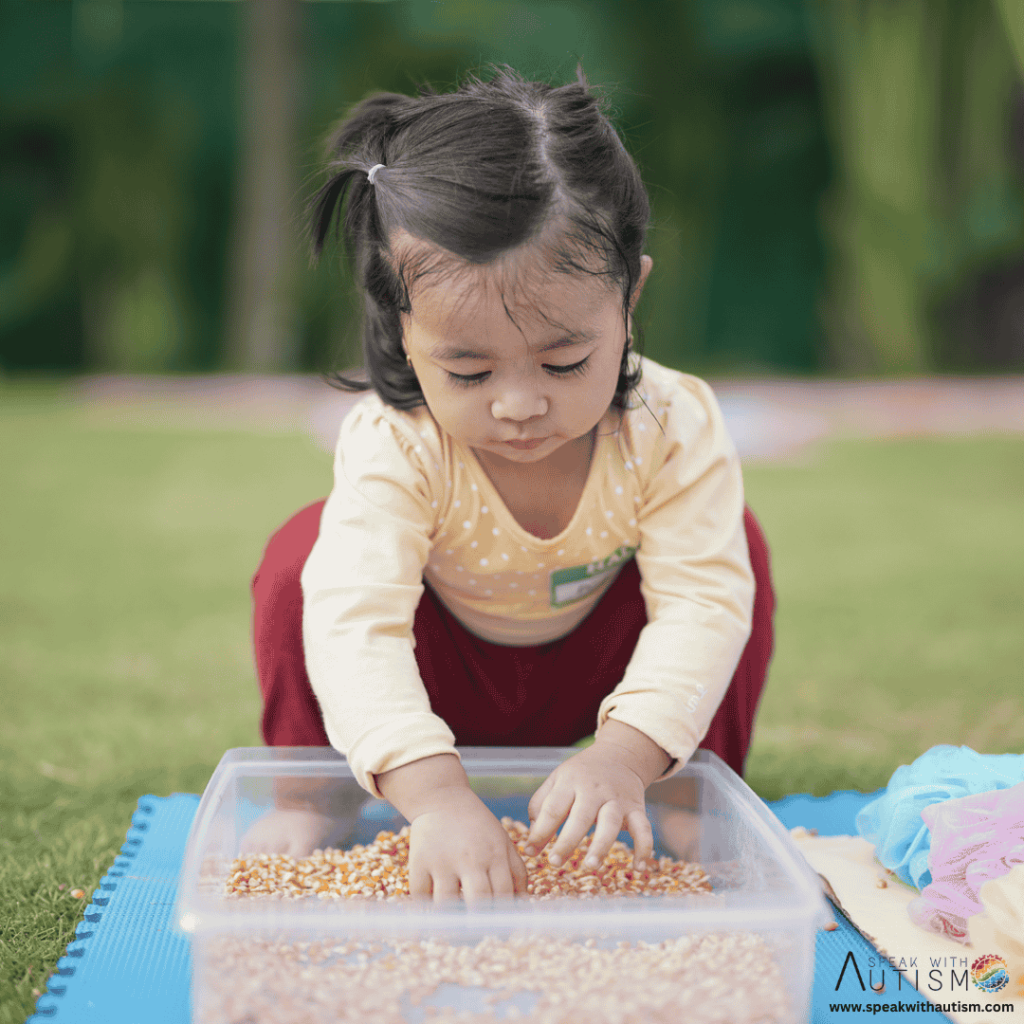
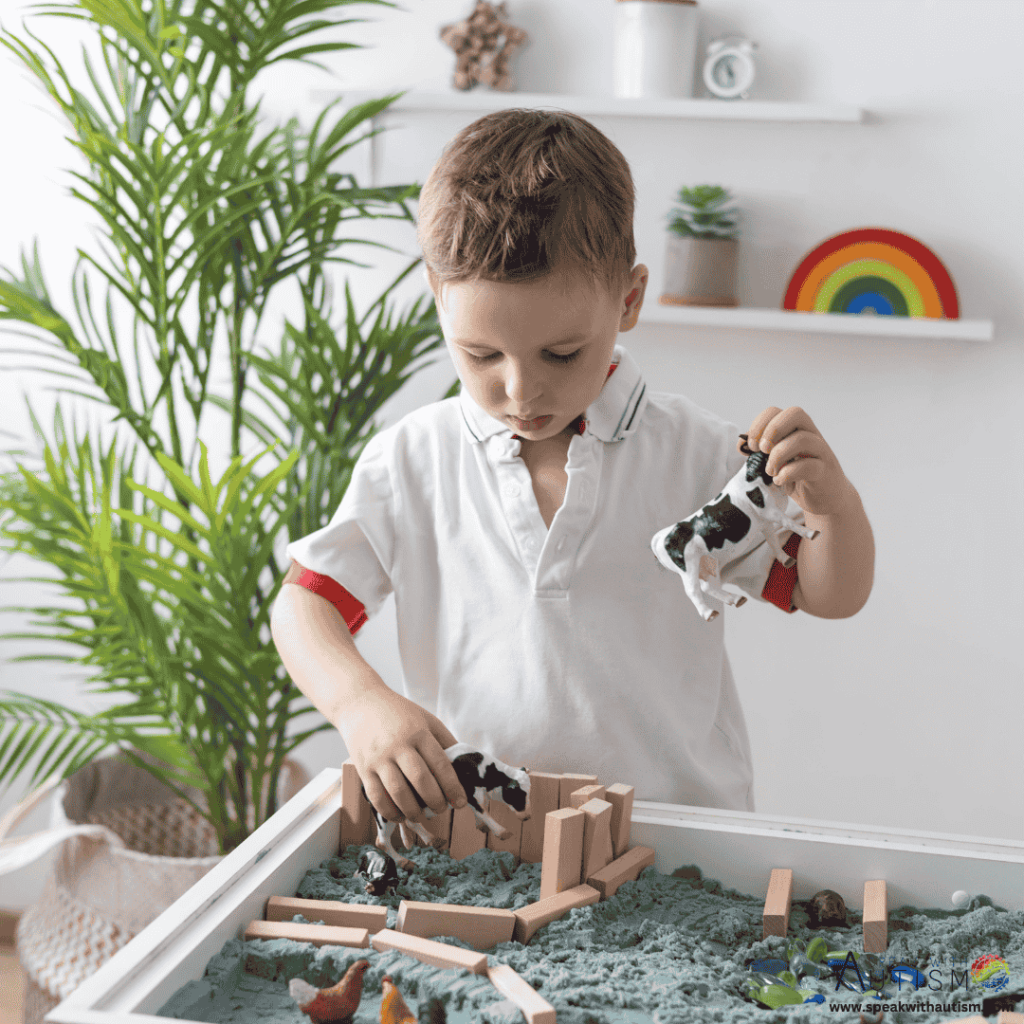
Activity 22: Sticky Notes Game
Stick and peel sticky notes on surfaces or the body for mild tactile challenges.
Activity 23: Ball Pit Play
Allow time in a ball pit for multisensory tactile engagement.
Activity 24: Ice Cube Game
Slide or hold ice cubes for a while to experience the cold sensation.
Activity 25: Lotion Application
Practice applying and spreading lotion for tactile sensory acceptance.
Activity 26: Fabric feel games
Use different fabrics, such as silk, velvet, and denim, for touch-and-guess activities.
Activity 27: Nature Touch Walk
Touch leaves, bark, and stones during outdoor play.

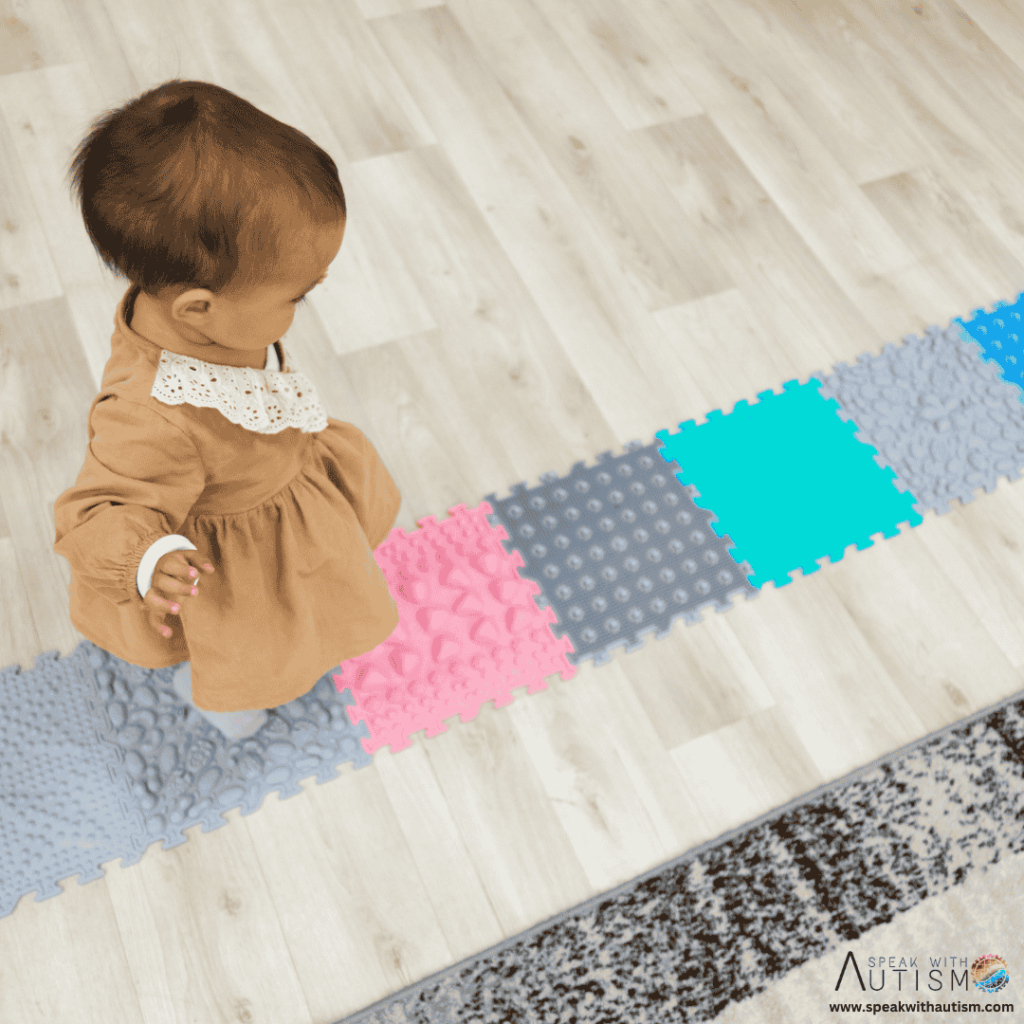
Activity 28: Textured Ball Roll
Roll textured balls on hands and feet for a soothing experience.
Activity 29: Velcro Fun
Attach and detach Velcro strips to explore resistance and touch.
Activity 30: Tactile Flashcards
Use flashcards with textured surfaces for fun learning.
Conclusion: Tactile Issues in SPD and Autism
All these activities will gradually help your children become more comfortable with textures and touch. Remember that this is a slow process, and you must be patient.
If you find this information useful, do share it with other parents. Your little help can make a big difference in someone’s life!
Frequently Asked Questions (FAQ’s)
Does your child like to wear the same type of clothes or is hesitant to touch anything?
This may be a sign that the child is experiencing tactile dysfunction. This condition may be part of sensory processing disorder (SPD), in which the child cannot tolerate certain textures or touch.
What can be done at home to resolve tactile dysfunction?
You can try these 10 effective activities at home:
Watercolor hand painting:
Initially apply color on just one finger.
Gradually apply color on the entire hand and make an impression on paper.
Make a texture book:
Add materials with soft, hard, and rough textures at home.
Let the baby touch and characterize each texture.
Hot and cold play:
Let the baby feel lukewarm and cold water.
Increase the temperature gradually, making sure it is safe for the baby.
Texture walk:
Let the baby walk on soft and hard mats.
Start with a soft mat and slowly move to a hard mat.
Deep pressure therapy:
Lightly wrap the baby in a blanket.
Do joint compression, where gentle pressure is applied to each joint.
Brush therapy:
Use a soft brush or sensory brush to make gentle strokes on the baby’s skin.
Treasure hunt:
Hide small toys in rice, sand, or flour.
Encourage the child to find it.
Massage and compression:
Gently massage the baby’s back, shoulders, and arms.
